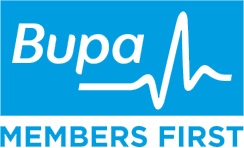Children’s sporting injuries are common at the start of a new season. It is not uncommon for kids to do 5 or 6 days a week of their chosen sport, especially if they play for school, club and representative or academy teams. We commonly hear that 10 to 16-year-old kids are clocking up 10-12 hours of solid activity. Even the highly trained AFL footballers don’t do that much full-on exercise. Unlike our young athletes, Elite players have access to complete recovery programs such as ice baths, massage, yoga and Physio to help them. It is easy to understand that the high training demands placed on a young developing body can lead to injuries.
Common Children's Sporting Injuries During Growth
Heel pain is a common injury in 10 to 12 year old group and normally is due to Severs condition. Pain associated with Severs is felt at the heel where the strong Achilles tendon attaches. During growth, this area is still developing. Extra strain during rapid growth and high activity can cause irritation of the site which leads to pain.
Another similar condition occurs at the knee where the knee cap tendon attaches to the shin bone and is called Osgood –Schlatter’s disease. This is more common in the 12-14-year-old age range. Pain is localised to the front of the knee and you can often feel a lump at the painful site. The lump can be very sensitive and painful, especially with jumping, running or when knocked.
Stress fractures are also an issue during growth. Sports like fast bowling for cricket, gymnastics and basketball can involve significant strain on the bones in the low back that are still developing. Teenage children do not normally complain of back pain with activity so we recommend seeking an assessment to get things checked early.
Shoulder issues are also common in throwing sports such as baseball. Pitching requires a lot of flexibility from the legs, spine and shoulder. If one area is stiff or weak, which is common in adolescents, extra strain is usually placed on the shoulder.
Treatment Options
The combination of excessive loads and a growing body can create the perfect storm for these issues. Pain can significantly hamper the ability of the child to play their chosen sport. Early diagnosis is important to reduce the time away from sport. Treatment involves reviewing the type and amount of training and modifying this to a level where symptoms are controlled. Strengthening and stretching exercises to help reduce the strain on the injury site are important to manage the condition through the growth years.
If you have Bupa health cover, children’s physio and podiatry treatment is usually fully covered with no out-of-pocket expenses. Early treatment and advice can shorten the pain and time away from sport dramatically.







Make an Appointment
COMPLEXICA BUILDING Level 1, 9 Charles St
West Lakes 5021
Call Us08 8347 2043